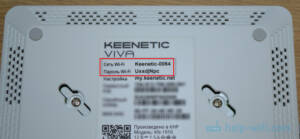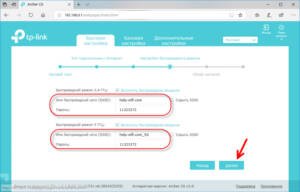- Step by step: setting up Keenetic
- Connecting the device and entering settings
- Setting up Wi-Fi and access password
- Setting up security and anti-hacking
- Setting up Internet access and advanced features
- How to update Keenetic firmware
- Checking for updates
- Downloading and installing new firmware
- How to set up a VPN on a Keenetic router
- Setting up a VPN client on devices
Step by step: setting up Keenetic
For novice users, setting up a router may seem like a daunting task. However, with the help of Keenetic, this can be done quickly and easily. In this guide, we will look at each step of setting up the Keenetic router. Step 1: Connecting the router Before starting the setup, you need to connect the router to the Internet and to your computer. To do this, connect a wire from your ISP to the WAN port on the router, and then connect the router to your computer using an Ethernet cable. Step 2: Login to the Control Panel Open the browser on your computer and enter the address 192.168.1.1 in the address bar. After this, you should see the login page. Enter the username and password that are listed on the bottom of your router and click 'Login'. Step 3: Setting up Wi-Fi Go to the 'Wi-Fi' tab and select 'Settings'. Here you can change your Wi-Fi network name and password. Don't forget to save the changes.Step 4: Set up a password for logging into the control panel. Go to the 'System' tab and select 'Password'. Here you can change the password for logging into the router control panel. Don't forget to save your changes.Step 5: Security SettingsGo to the 'Security' tab and select 'Firewall Settings'. Here you can configure protection against external threats and block unwanted sites. Congratulations, you have successfully configured your Keenetic router! Now you can enjoy a fast and secure internet connection.
Connecting the device and entering settings
Before you start setting up the Keenetic router, you need to connect the device to a power source and an Ethernet cable that connects the router to the Internet provider.
After the router is connected, you need to enter its settings. To do this, you need to enter the router's IP address into the address bar of your browser. Usually it's 192.
168.
1.
1 or 192.
168.
0.
1. If you are not sure about the IP address of your router, you can use the command line and enter the ipconfig command. As a result, you will see a list of connected devices and their IP addresses.
After you have entered the router's IP address into the address bar of your browser, an authorization window will appear. Enter the username and password that are indicated on the sticker on the router case or in the operating instructions.
Now you are in the Keenetic router settings and you can start configuring them.
Setting up Wi-Fi and access password
When you set up Keenetic, one of the most important tasks is setting up Wi-Fi and its access password. To begin, log into the Keenetic admin panel using your router's IP address and login information.
After logging in, you need to go to the Wi-Fi setup page. You will see a list of available Wi-Fi networks that you can configure. Select the network you want to configure and click the Configure button.
Next, you must select the type of security you want to use for your Wi-Fi network. The most common options are WPA2 and WPA3. Select one of them and enter the password you want to use for your network.
Additionally, you can configure additional settings such as hiding your Wi-Fi network name, setting access restrictions, etc.
d.
When you finish setting up, save your changes and reboot your router. You can now connect to your Wi-Fi network using your chosen password and enjoy a fast and reliable Internet connection!
Setting up security and anti-hacking
When you set up your Keenetic router, one of the most important aspects is security. After all, if your router is not protected from hacking, this can lead to leakage of your personal data and dangerous cyber attacks on your network.
First, make sure you use a strong password to log into the router's management interface. Never use the standard passwords that come with your router, as they can be easily guessed by attackers.
In addition, set up Wi-Fi network protection. Use a strong encryption key such as WPA2 and make sure you are not using an open network without a password. You can also set up MAC address filtering to allow access only to devices you want to connect to your network.
Finally, be sure to set up a firewall to protect your network from malicious attacks from the Internet. Keenetic Firewall can automatically block unsafe websites and dangerous applications, and also provides the ability to configure blocking rules for specific devices.
With these tips in mind, you can be sure that your Keenetic router is configured for maximum security and is protected from hacking.
Setting up Internet access and advanced features
After connecting the Keenetic router to the Internet, you need to configure access to it. To do this, you will need to know the login and password from your Internet provider, as well as the connection type.
To configure Internet access, go to the “Network” section on the router management page. Then select the Internet tab and configure your connection settings.
In addition, the Keenetic router has many advanced features that can be configured to improve the performance of your network. For example, you can configure access to the router from the Internet, configure content filtering, configure a VPN server, configure routing, etc.
d.
To configure these functions, go to the appropriate sections on the router management page and follow the instructions.
Setting up a Keenetic router is easy if you follow the instructions and have basic knowledge of network technologies. Use this guide to get started with your Keenetic router.
How to update Keenetic firmware
Updating the firmware of your Keenetic router is an important step to ensure security and improve the performance of the device. To update the firmware you will need to follow a few simple steps:
1. Go to the manufacturer’s website and download the latest firmware for your Keenetic model.
2. Connect your computer to the router using an Ethernet cable.
3. Log into the router’s web interface by entering address 192 in the browser’s address bar.
168.
1.
1.
4. In the Firmware Update section, select the downloaded firmware file and click Update.
5. Wait for the update process to complete.
After a successful firmware update, the router will reboot. Make sure all settings are saved and the device is working correctly.
Updating the Keenetic firmware will not take much time, but will ensure safer and more stable operation of your router. Remember to check for updates regularly to ensure your network is secure.
Checking for updates
Checking for updates for your Keenetic router is very important, as new firmware versions may contain important fixes and security improvements. To check for updates, you need to go to the web interface of the Keenetic router, select the 'System' section in the menu and click on the 'Update' button. If a new firmware version is available, it will be displayed in the list. After this, you can download and install the new firmware version. Don't forget to back up your router settings before updating the firmware.
Downloading and installing new firmware
In order for your Keenetic router to work most efficiently, it is recommended to periodically update its firmware. This allows you to improve the operation of the device, fix possible errors and add new functions.
You can download the new firmware on the manufacturer's official website. On the support page, select your router model and go to the firmware download page. Download the file with the extension .
bin.
To install the firmware, connect your computer to the router using an Ethernet cable. Launch your browser and enter the router address in the address bar (usually 192.
168.
1.
1). Enter login and password.
In the setup menu, select 'Firmware Update'. Click the 'Browse' button and select the downloaded firmware file. Click the 'Update' button. Once the installation process is complete, the router will automatically reboot.
It is important to remember that while installing the firmware, you cannot turn off the router or disconnect it from the power supply. This may damage the device.
Now you know how to download and install new firmware on a Keenetic router. Update the firmware periodically to keep your router running at its best.
How to set up a VPN on a Keenetic router
VPN (Virtual Private Network) is a technology that allows you to create a secure and encrypted connection between computers over the Internet. If you want to use VPN on all devices in your home network, you need to set up VPN on your Keenetic router.
First, you need to check whether your Keenetic router supports VPN protocols, such as PPTP, L2TP/IPSec or OpenVPN. This information can be found in the documentation for the device or on the manufacturer's website.
Next, you need to configure a VPN server on your Keenetic router. To do this, go to the router's web interface, select the 'Settings' tab and then 'VPN'. Here you can select the desired VPN protocol and configure connection settings.
After setting up the VPN server, you need to create users who will have access to the VPN. To do this, go to the 'Users' tab and create a new user. Specify your username and password, and select the VPN protocol that this user will use.
Finally, set up a VPN client on your computer or device to connect to the VPN server on your Keenetic router. To do this, you will need to know your router's IP address and the credentials of the user you created in the previous step.
Setting up a VPN on a Keenetic router may seem like a daunting task for beginners, but by following this guide, you can set up a VPN on your router and secure your home network. There are several factors to consider when choosing a VPN protocol. For example, PPTP and L2TP may be faster but less secure than OpenVPN and IKEv2. Also keep in mind that some devices may not support all protocols.
To set up a VPN server on Keenetic, you need to go to the router management interface and select the 'VPN' section. Then you must select a protocol, configure the connection, and install certificates if required.
For example, to configure OpenVPN you need to download a configuration file, import it and configure connection parameters. After this, you can connect to the VPN server and start using it to access the Internet securely.
It's important to remember that setting up a VPN server can be challenging, especially for first-time users. Therefore, if you have any problems, seek help from specialists or the Keenetic community.
Setting up a VPN client on devices
The VPN client allows you to ensure a secure Internet connection, hide your IP address and ensure privacy when browsing the Internet. Setting up a VPN client on devices may vary depending on the operating system and the VPN provider used.
To configure a VPN client on devices running the Windows operating system, you must select 'Settings' in the 'Start' menu, then go to the 'Network and Internet' section. Next, select 'VPN' and click 'Add VPN connection'. Fill in the fields according to the settings of your VPN provider.
Setting up a VPN client on devices with the Android operating system is done using the VPN client built into the operating system. You must select 'Settings' and go to the 'Network and Internet' section. Next, select 'VPN' and click 'Add VPN connection'. Fill in the fields according to the settings of your VPN provider.
Setting up a VPN client on devices with the iOS operating system is similar. You must select 'Settings' and go to the 'VPN' section. Next, select 'Add VPN configuration' and fill in the fields in accordance with the settings of your VPN provider.
Setting up a VPN client on your Keenetic router can significantly improve the security of your home network. To configure a VPN client on the Keenetic router, you must select 'VPN' in the 'Settings' menu. Next, select 'Add a new connection' and fill in the fields in accordance with the settings of your VPN provider.
Depending on the VPN provider you use, the VPN client settings on your devices may vary. In any case, setting up a VPN client on devices is a simple and effective measure to ensure security when browsing the Internet.
Read further:






